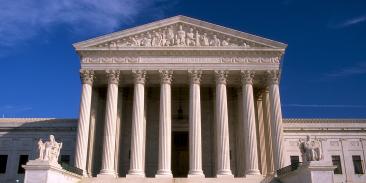Environmental Defense Praises Virginia Safe Harbor For Woodpecker
The US Fish and Wildlife Service today awarded a permit to The Nature Conservancy authorizing it to administer a novel endangered species “safe harbor” agreement in Virginia for the red-cockaded woodpecker. Environmental Defense, a group that helped create this new conservation tool, hailed the decision as a major step forward in the conservation of the endangered woodpecker. Fewer than 20 of the birds remain in the state, almost all of which live on The Nature Conservancy’s Piney Grove Preserve in southern Virginia.
Under safe harbor agreements, private landowners agree to restore or improve habitat for endangered species, but do not incur new regulatory restrictions on the use of their land. Such agreements help overcome landowner fear that beneficial land management practices will be “rewarded” with new regulatory constraints.
“Were it not for this agreement, the red-cockaded woodpecker would not have much of a future in the state of Virginia,” said Michael Bean, chair of Environmental Defense’s wildlife program and one of the originators of Safe Harbor. “The number of birds in Virginia is so low that we must restore more habitat to build a larger population. Doing that requires the cooperation of private landowners.”
The safe harbor program being launched in Virginia is modeled after similar ones in place for the red-cockaded woodpecker in North Carolina, South Carolina, and Texas, but with one major difference. State or federal agencies administer all of the existing programs. In Virginia, one of the nation’s most preeminent private conservation organizations will be administering the new program. The Nature Conservancy will seek to encourage landowners around its own Piney Grove Preserve in Sussex County to carry out habitat improvements beneficial to the woodpecker. Currently, all the breeding pairs of this rare bird in Virginia occur only on the Preserve. By encouraging compatible land management practices on nearby land, the Conservancy hopes to enlarge the state’s red-cockaded woodpecker population.
“The Nature Conservancy deserves enormous credit for taking this initiative,” said Dr. David Wilcove, senior ecologist with Environmental Defense. “TNC has shown how a private conservation organization can make creative use of a very versatile new conservation tool and enlist landowners as partners in conservation, without having to give up either their land or their rights to use it.”
With more than 3 million members, Environmental Defense Fund creates transformational solutions to the most serious environmental problems. To do so, EDF links science, economics, law, and innovative private-sector partnerships to turn solutions into action. edf.org
Latest press releases
-
Trump Administration’s New Tax Credit Guidance Is “Another Senseless Attack on Clean Energy”
August 15, 2025 -
More Dire Colorado River Reservoir Forecasts Reinforce Urgent Need for Action
August 15, 2025 -
EDF, UCS Ask Court to Enjoin Trump Administration’s Brazenly Unlawful Use of Corrupt “Science” Report
August 15, 2025 -
Independent Report Finds that the Trump Administration’s Orders to Keep Coal-fired Power Plants Running Could Cost Consumers between $3-6 Billion a Year
August 14, 2025 -
EDF Strongly Opposes Trump Administration Proposals to Eliminate Protections for Air Pollution from Power Plants
August 13, 2025 -
Some Truck Makers Challenge Vital Clean Truck Partnership with California
August 12, 2025










